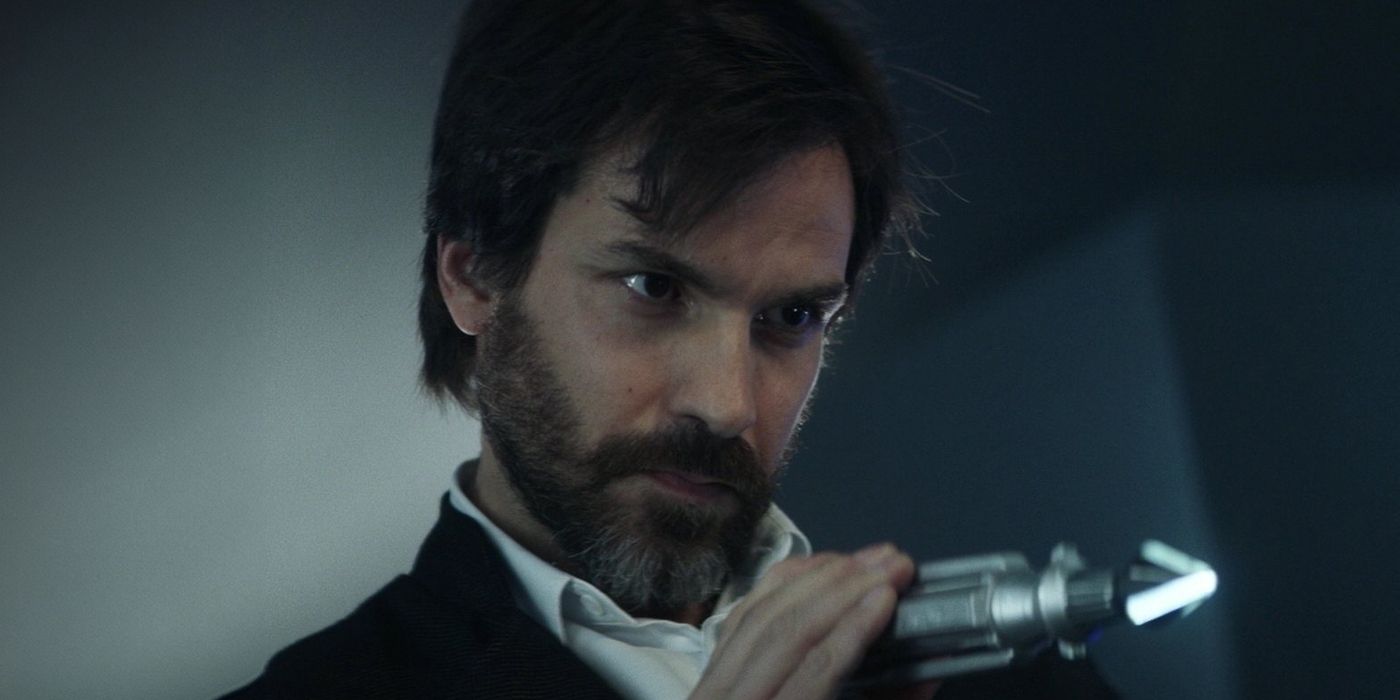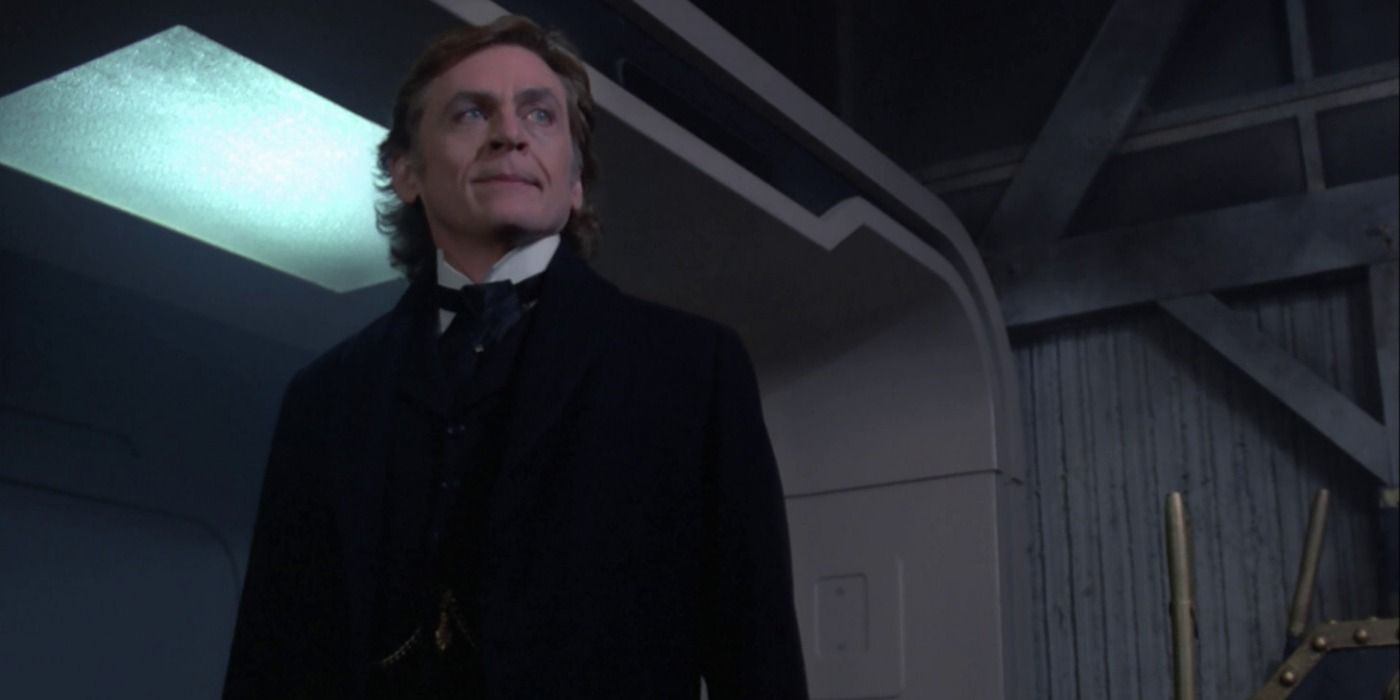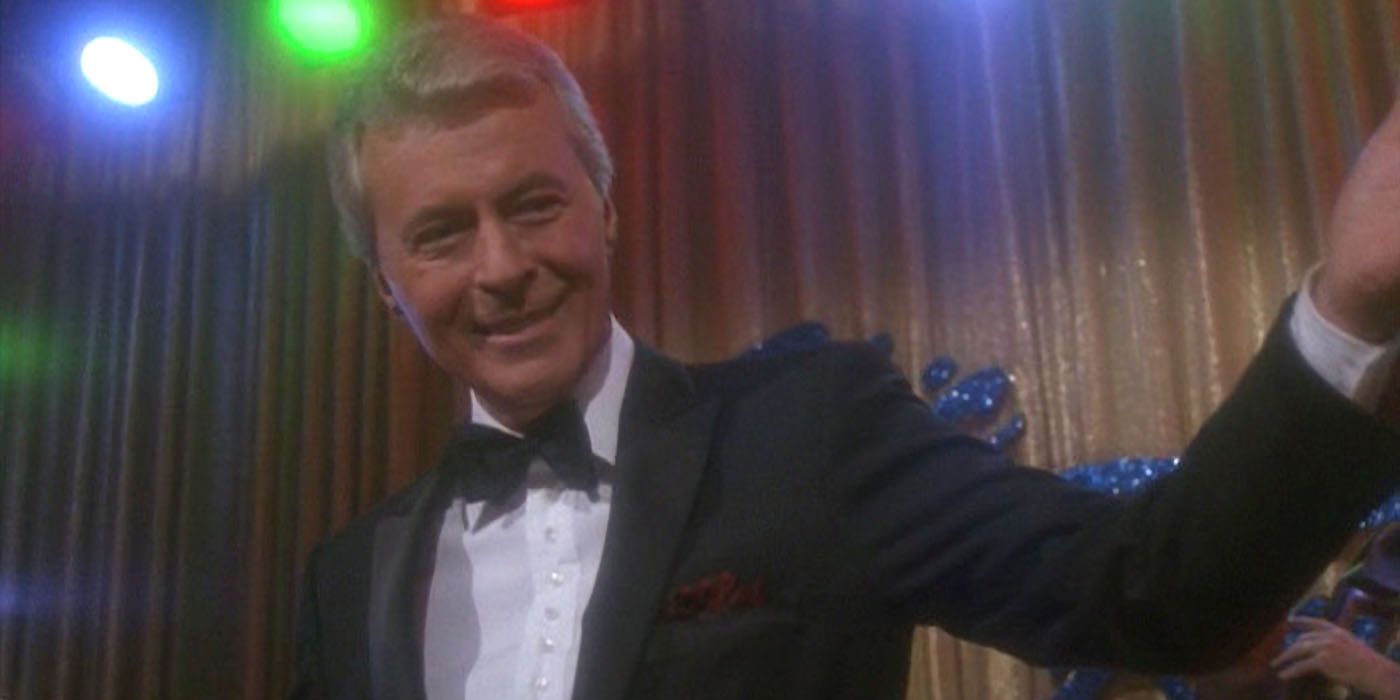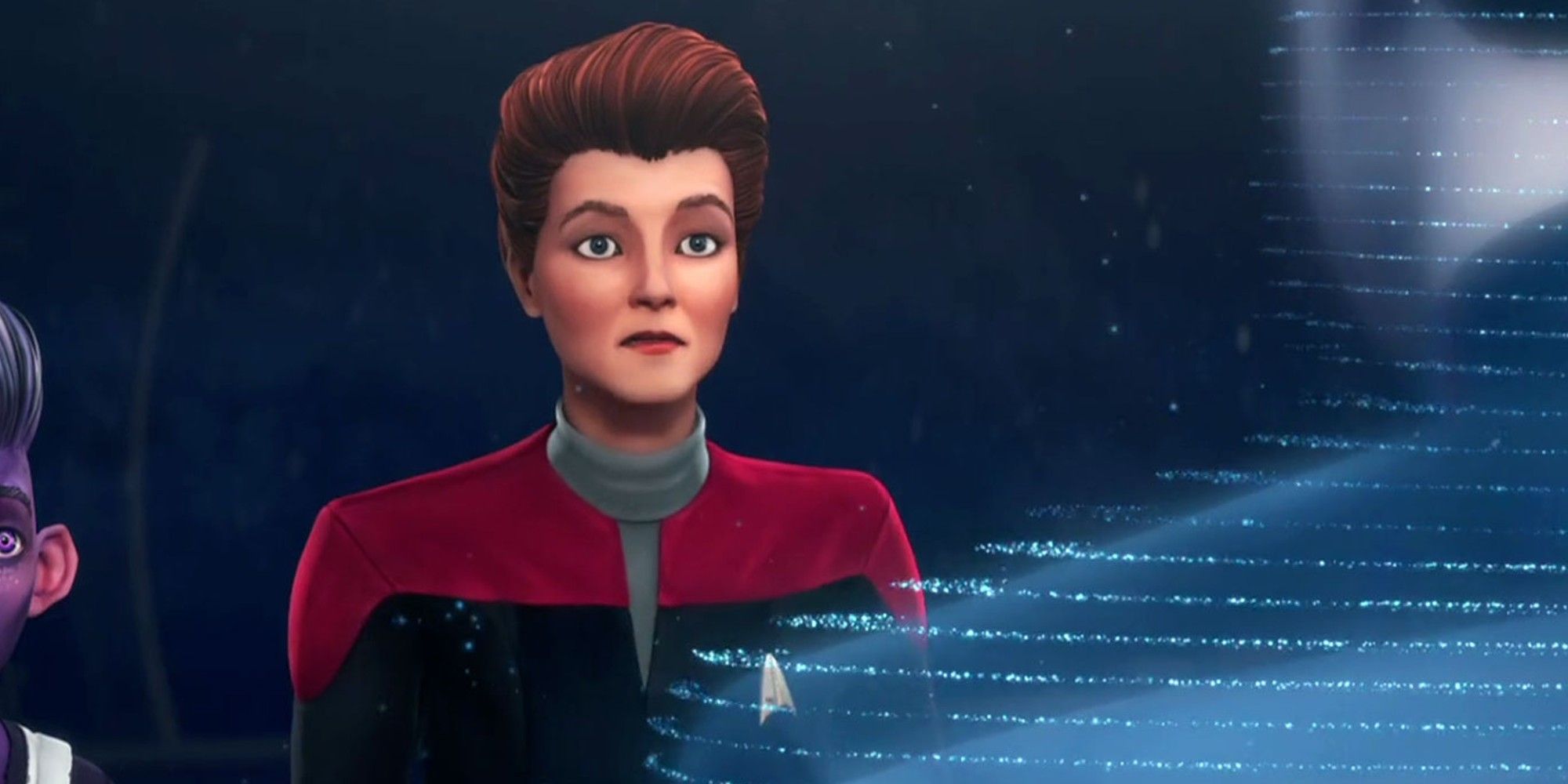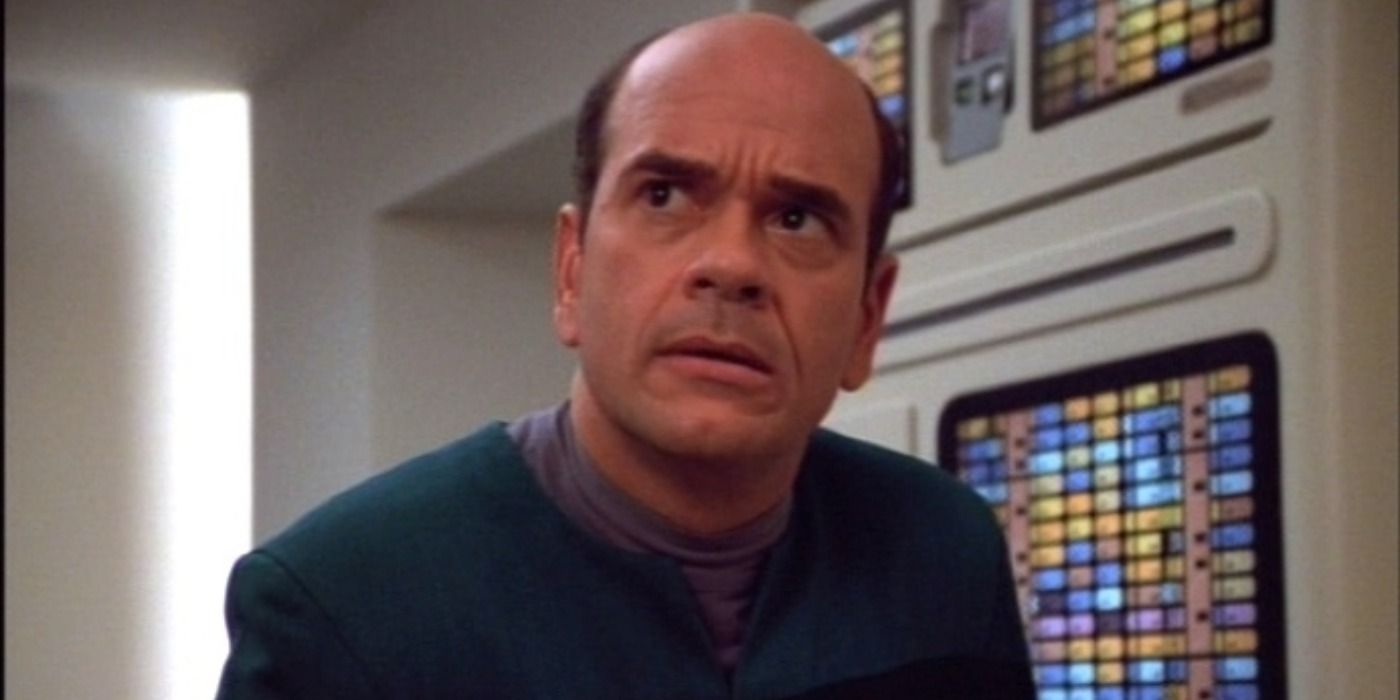
Exploring Star Trek's Top 5 Holographic Creations

Discover the brilliance of Star Trek's holographic technology and its captivating creations.
Star Trek's top holograms may not have physical bodies, but they are still characters that leave a lasting impression. The holodeck was first seen in Star Trek: The Next Generation, serving as an updated version of the recreation room from Star Trek: The Animated Series. It was a source of entertainment for the crew members of the USS Enterprise-D. When the holodeck's interactive environments and stories called for characters like gangsters for Captain Jean-Luc Picard to interact with, the holodeck created holograms based on predetermined code.
In Star Trek: Deep Space Nine, there were smaller holosuites available for paying customers. These holosuites were owned and operated by Quark. While it was suggested that the holograms in Quark's holosuites were designed to be more interactive with guests, there were also family-friendly programs like Captain Benjamin Sisko's baseball simulation. Star Trek: Voyager took hologram technology to new heights by transforming holograms from mere non-player characters into fully developed individuals. The show explored themes of personal rights and autonomy for holograms, questioning their status as photonic life-forms. These are our top five favorite Star Trek hologram characters.
Santiago Cabrera as Cristóbal Rios’ Many Holograms On La Sirena
Captain Rios' one-man crew in Star Trek: Picard
rios medical hologram emil on star trek picard - Captain Rios' one-man crew in Star Trek: Picard - Santiago Cabrera as Cristóbal Rios’ Many Holograms On La Sirena
La Sirena, the starship piloted by Captain Cristóbal Rios, was designed for a crew of six. However, Rios was alone on board, so he created holographic crew members to help out when needed. These holograms were all based on the Emergency Hologram model that came with the ship, but Rios customized them to look like him and share his memories and personality. Each hologram had a unique name, accent, and style that set them apart from each other and from Rios, until they were all merged into one hologram named Emmet.
Cristóbal Rios' Emergency Holograms | ||
|---|---|---|
Name | Function | Accent |
Emil | Emergency Medical Hologram | English |
Enoch | Emergency Navigational Hologram | Irish |
Ian | Emergency Engineering Hologram | Scottish |
Emmet | Emergency Tactical Hologram | Chilean Spanish |
Mister Hospitality | Emergency Hospitality Hologram | US American |
Daniel Davis as Professor James Moriarty
An adversary fit for Data in Star Trek: The Next Generation
Star Trek TNG Elementary Dear Data Moriarty - An adversary fit for Data in Star Trek: The Next Generation - Daniel Davis as Professor James Moriarty
Professor James Moriarty originally started as a holographic version of Sherlock Holmes' infamous enemy in Lt. Commander Data's mystery program on the USS Enterprise-D. When Data became too skilled for the program's mysteries, Lt. Commander Geordi La Forge requested the computer to create a more challenging adversary. This led to the creation of a new Moriarty, who became self-aware beyond the holodeck's limitations and even held Dr. Katherine Pulaski and control of the Enterprise hostage.
Despite knowing he was just a hologram, Moriarty refused to accept the constraints of 24th-century technology.
Professor Moriarty evolved beyond his fictional origins, as newfound awareness made his criminal desires almost unnecessary. Despite this growth, his core personality remained unchanged, as he saw no issue with resorting to extreme measures to achieve his goals. Even though he knew he was a hologram, Moriarty refused to accept the limitations of 24th-century technology that confined him and Countess Regina Bartholomew to the holodeck, relenting only when he believed he had succeeded.
A different version of Professor Moriarty, an extension of Data as Daystrom Station's security program, made an appearance in Star Trek: Picard season 3.
James Darren as Vic Fontaine
Star Trek: Deep Space Nine's Vegas crooner
Vic Fontaine, singing hologram, smiles on stage in a crisp tux. - Star Trek: Deep Space Nine's Vegas crooner - James Darren as Vic Fontaine
In the later seasons of Star Trek: Deep Space Nine, there was a popular holosuite program called Vic's Las Vegas Lounge. This program recreated a 1960s nightclub with Vic Fontaine, a sentient hologram who was the owner and star performer. Vic was a friendly and down-to-earth host who became self-aware and enjoyed providing a place for the DS9 crew to relax during the stressful Dominion War. He was known for giving advice, like helping Constable Odo win over Major Kira and assisting Ensign Nog with his PTSD.
Vic Fontaine Appearances on Star Trek: Deep Space Nine | |
|---|---|
Star Trek: Deep Space Nine season 6, episode 20 | "His Way" |
Star Trek: Deep Space Nine season 6, episode 26 | "Tears of the Prophets" |
Star Trek: Deep Space Nine season 7, episode 1 | "Image in the Sand" |
Star Trek: Deep Space Nine season 7, episode 8 | "The Siege of AR-558" |
Star Trek: Deep Space Nine season 7, episode 10 | "It's Only a Paper Moon" |
Star Trek: Deep Space Nine season 7, episode 15 | "Badda-Bing, Badda-Bang" |
Star Trek: Deep Space Nine season 7, episodes 25 & 26 | "What You Leave Behind" |
Kate Mulgrew as Hologram Janeway
The guiding light of Star Trek: Prodigy
Kate Mulgrew as Kathryn Janeway in Star Trek: Prodigy. - The guiding light of Star Trek: Prodigy - Kate Mulgrew as Hologram Janeway
Robert Picardo as The Doctor
In Star Trek: Prodigy, the USS Protostar was equipped with a holographic training advisor modeled after Captain Kathryn Janeway. This advisor was designed to help maintain basic ship functions and assist the crew when needed. When a group of Delta Quadrant kids led by Dal R'El took control of the Protostar, Hologram Janeway introduced them to the concept of the Federation. This brought hope to the crew, who had been living in difficult conditions at the Tars Lamora mine. They not only saw Hologram Janeway as a teacher but also as a trusted friend. This led to the expansion of Janeway's program beyond its original parameters.
Star Trek: Voyager's Emergency Medical Hologram
The Doctor from Star Trek: Voyager. - Star Trek: Voyager's Emergency Medical Hologram - Robert Picardo as The Doctor
The Doctor, the first holographic character in a Star Trek show's main cast, was an artificial life form on Star Trek: Voyager. Like TNG's Lt. Commander Data, he explored humanity by observing it from an outsider's perspective. Initially created as an Emergency Medical Hologram to assist regular medical staff in emergencies, the Doctor became Voyager's Chief Medical Officer after the original CMO's death.
Through continuous operation, the Doctor surpassed his original programming and evolved into a multifaceted character. He took on roles such as a father, opera singer, spy, comedian, historian, diplomat, holonovel author, advocate for hologram rights, and even an Emergency Command Hologram. With the help of a mobile emitter based on 29th-century technology, the Doctor was able to exist beyond the confines of Voyager.
The EMH's transformation from a simple medical program to a complex and beloved character made Star Trek: Voyager's Doctor stand out as one of the best holograms in the Star Trek universe.
The Doctor played a crucial role in changing perceptions about holograms. Kes convinced him that he was a valuable member of Voyager's crew, with rights and privileges just like any other crew member. Taking Kes' advice to heart, the Doctor helped guide Seven of Nine in her journey to rediscover her humanity after being a Borg drone. Despite never choosing a permanent name, the Doctor's transformation from a basic medical program to a complex and beloved character made him one of Star Trek's most outstanding holograms.
If you want to watch Star Trek: The Next Generation, Star Trek: Deep Space Nine, Star Trek: Voyager, or Star Trek: Picard, you can stream them on Paramount+. Star Trek: Prodigy is available for streaming on Netflix.
Editor's P/S:
The article provides a comprehensive exploration of some of the most iconic holographic characters in the Star Trek universe. It effectively captures their unique traits, motivations, and the impact they had on the respective shows they appeared in. The descriptions of each hologram are detailed and engaging, highlighting their contributions to their respective crews and the overarching themes of the franchise.
The article's organization is well-structured, featuring a clear introduction and conclusion that effectively frame the discussion. The use of images and tables adds visual interest and provides additional context to the characters. Overall, this article is a valuable resource for fans of Star Trek and those interested in the evolution and representation of holographic characters in science fiction. It showcases the depth and diversity of these characters, demonstrating the enduring appeal of holograms in popular culture.
